Issue #12 December: The Only Guide You Need for an Unforgettable Trip to Tokyo, Japan 🗼
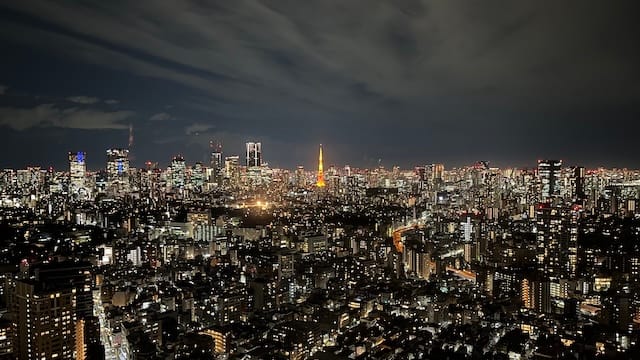
My favorite places to eat, shop, and explore in Tokyo. Plus some etiquette tips to avoid behaving like a cotton-headed ninny-muggins.
Tokyo is my second favorite city in the world (after SF, of course). I’ve visited this glorious city five times, most recently this month, and yet, I still feel as if I’ve just scratched the surface. There’s really nowhere in the world like Tokyo and a place I believe everyone should visit at least once. Where else can you see an ancient shrine, hang out with capybaras, ride a Hello Kitty train, eat Michelin-star ramen, buy an ultra-rare Birkin, and watch a robot dance show all in the same day? The city is filled with endless possibilities, which can feel overwhelming, but it also means that no matter what you do, you will have a memorable experience. I hope these recs will help make your trip even better! 😊
Updated: October 3, 2025
Eat and Drink 😋
Most places in Japan are tiny and have a wait. Queuing is part of the culture and the sooner you embrace this, the less hangry you’ll be. A few restaurants accept reservations, but it can be difficult to book so if there’s a restaurant you have your heart set on, get on that asap! The best strategy I’ve found is to just line up before the restaurant opens. For Michelin-star and/or viral spots on social media, get there 60-90 minutes before opening to guarantee first or second seating. There’s nothing more devastating than being turned away because a restaurant has run out of noodles for the day (this is a common thing). If all this feels stressful, then just eat wherever you want. Every train station and shopping center has tons of restaurants with picture menus and everything is generally better than you’ll get at home. Also, going out for breakfast isn’t really a thing in Japan so most places don’t open until 10am or 11am (except for Western cafe chains). Note: all the info below reflects my latest experiences. Please research beforehand for the latest business hours, reservations process, and accepted payment methods.
🍣
- UobeiGoulabe (Shibuya): Bullet train sushi that magically appears at your seat after ordering on a tablet. Sushi quality is not as good as the options below, but the experience is really fun.
- Nemuro Hanamaru (multiple locations): Another casual conveyor belt sushi with the option to order a la carte.
- Katsu Midori Sushi (multiple locations): Casual conveyor belt sushi, but everyone orders from the tablet instead. Try the local fishes you can’t get elsewhere.
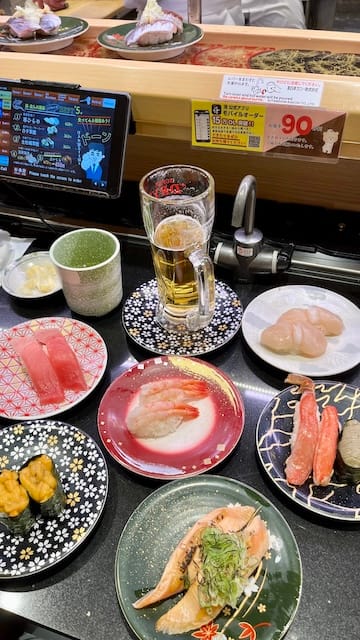
🍜
- Hanayama Udon (Ginza and Haneda Airport): Serves flat udon with the most perfect chewy texture. I always pick some up on my way out to make at home.
- Udon Shin (Shibuya): Handmade udon to order. The tempura is also a must-try.
- Nakiryu (Minamiotsuka): Michelin-starred ramen known for dandanmen, a spicy sesame paste broth. The first two people to wait in line get a seat. I was one of them. Cash only.
- Konjiki Hototogisu (Shinjuku): Another Michelin-starred ramen popular for the seafood shio broth. Grab a timed-ticket and explore the gardens across the street while you wait. Cash only.
- Ginza Duck Soba Kyudaime Keisuke (Ginza): If you’re a fan of duck, try this no-wait casual duck ramen spot with thin, thick, or dipping broth options. Order from a machine and settle in.
- Ginza Hachigo (Ginza): Japanese ramen meets French technique. This 6-seater also has a Michelin-star. The broth is a rich consommé and the ramen is topped with foie and truffle ravioli. They do take reservations, but I tried and failed several times before giving up to stand in line.
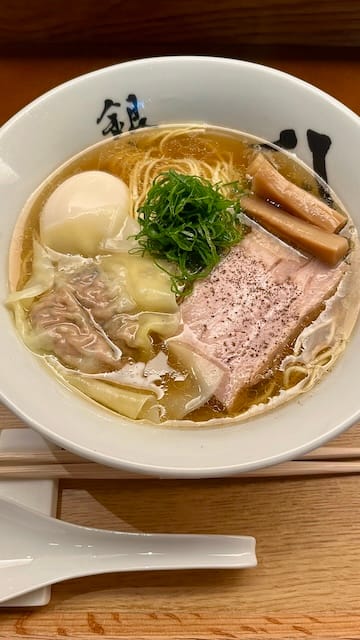
🍱
- Katsudon ya zuicho (Shibuya): No-frills family spot that serves comfort in a bowl: katsu, egg, and rice. What else do you need? Cash only.
- Tsumuji (Tsukiji): One of the few Japanese breakfast spots in Tokyo. The signature set comes with 18 little dishes. They do accept reservations, but if you happen to walk-in like me and have to wait, you can enjoy a first-breakfast at Tsukiji Fish Market.
- Isshin (Daikanyama): Located in my favorite Tokyo neighborhood, this gem of a spot offers delicious homestyle lunch sets in a relaxing shoes-off environment. The warabimochi (handmade water mochi) for dessert is divine. Cash only.
- Gyukatsu Motomura (multiple locations): Beef tonkatsu that you can grill to your preferred doneness at the table. Comes in a large set with rice, soup, cabbage, and various dipping sauces. Upgrade to the wagyu if you want a treat!
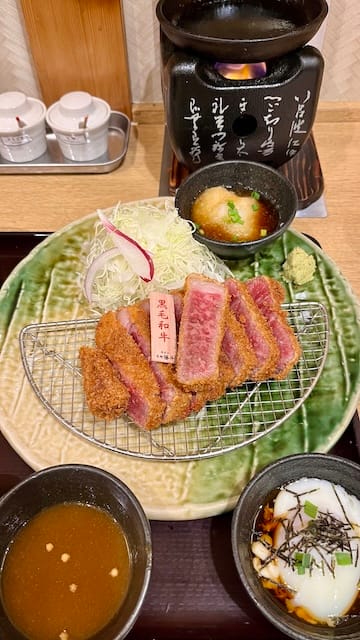
🍽️
- Ryan (Shibuya): Although known for its housemade soba noodles, I think the tasting menu dishes are actually better. It’s an accessible intro to creative and authentic Japanese cuisine in a modern setting. The drinks menu is also elite. Reservations are required for the tasting menu experience.
- Narisawa (Roppongi): If you’re looking to splurge, this beautiful 2 Michelin-star restaurant will take you on a culinary journey of Japan while baking fresh bread at your table. Reservations required.
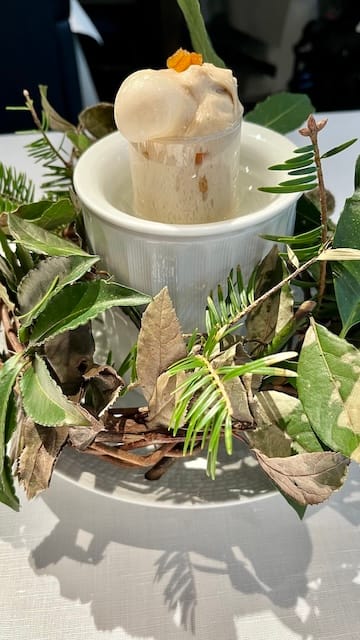
☕🍵
- Cafe Kitsuné (multiple locations): From the French-Japanese brand, Maison Kitsunè, these stylish cafes serve up tasty coffee and fox shaped cookies. The Aoyama location also has Western-style brunch dishes.
- Onibus Coffee (Nakameguro): Coffee shop on a bus!
- Ogawa Coffee Laboratory (Shimokitazawa): This spot is for serious coffee nerds. It’s a bean salon where the baristas will custom blend your perfect cup of coffee from over 20 types of beans.
- Cafe Reissue (Harajuku): This might be my favorite TikTok discovery. They specialize in 2D and 3D latte art. Just show them a picture of what you want (I showed Penrose) and their talented artists will make it come true. Cash only.
- Blue Bottle (multiple locations): Yes, I know Blue Bottle started in SF, but the vibes are just better in Tokyo. Also, some of the locations serve real food.
- Ippodo Tea (Marunouchi): The Marunouchi location features a shop and tea room where you can try their assortment and get recommendations from the helpful staff. Their teas are also sold in high-end department stores and supermarkets throughout Japan. I like to stock up on the Seiun matcha. Their other teas like the hojicha and genmaicha are lovely too.
- Starbucks Reserve Roastery (Meguro): There are only 6 Starbucks Reserve Roasteries in the world and this one blew my mind. It’s like the coffee version of Willy Wonka. I spent 2 hours here drinking and exploring every floor: coffee and pastries on the first floor, then tea on the second, cocktails and outdoor patio on the third, and lounge on the forth. They roast their beans in beautiful giant copper roasters and package them onsite. It also opens at 7am so a great option for the jetlagged.
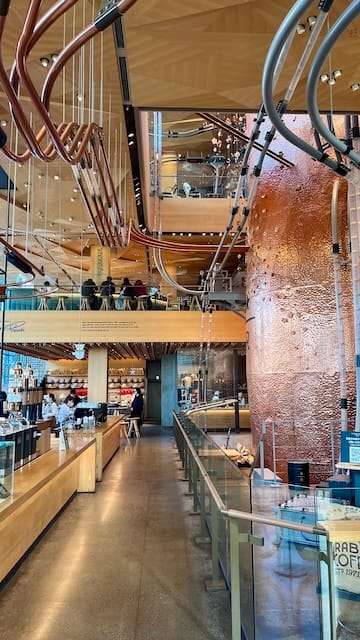
🍧🍬
- Number Sugar (multiple locations): The most decadent, melt-in-your-mouth caramels in interesting flavors like salt and orange peel. I always bring these back for friends.
- Azuki to Kouri (Shibuya): Kakigori (Japanese shaved ice) is an art form. This little spot takes it to the next level with stunning presentations and the fluffiest ice. Make a reservation.
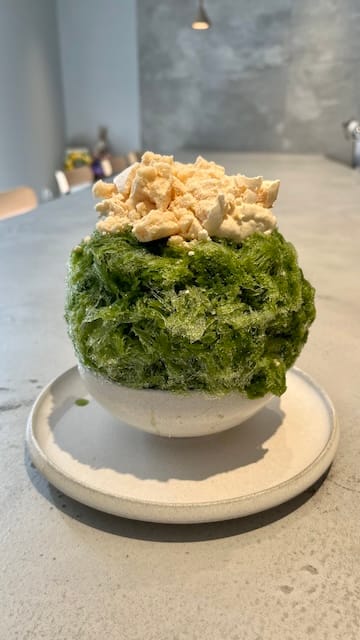
- Hiiragi Ginza (Ginza): A 6-seat dessert cafe on one side and a sweets shop on the other, this cozy spot serves beautiful Japanese-style treats like kakigori, dango, pudding, and freshly baked financier. Reservations are required for sit-down.

🥖
- Bricolage Bread & Co (Shibuya and Roppongi): French bakery from the Michelin-star chef of L’Effervescence, acclaimed baker from Osaka’s Le Sucre Coeur, and roaster from Fuglen Coffee Roasters. The Roppongi location is dine-in and serves the best pastrami sandwich I’ve ever had or you can grab-and-go at the Shibuya train station where you’ll find the fanciest egg salad sandwich.
🍙
- Any convenience store like 7-11 or Lawson’s will have tasty and easy snacks to go such as egg salad sandwiches, onigiri, baos, ice cream, etc. Also the smoothies at 7-11 is the best way to get your daily vitamin fix. Go to the freezer section to grab the fruit cup and then pay for it. Next, go to the smoothie machine, scan your cup to open the door, remove the plastic top, insert, and let it blend. It’ll be exactly what your body craves.
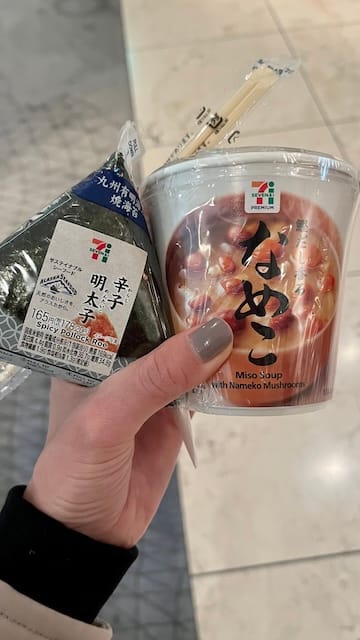
Shop 🛍️
Japan has the best shopping. Everything is so cute and beautifully packaged, it’s impossible to resist. And since the yen is weak against the dollar right now, it feels like the country is on sale. Also, most shops offer duty free shopping for purchases over 5,000 yen so you save even more (just bring your passport). Jokes about bringing empty luggage to carry your haul home are true. I do this already and still manage to panic buy suitcases the morning before my flight 😆. Even if you’re not into shopping, it’s still worth browsing to appreciate the aesthetics of Japanese design. For luxury shoppers, designer consignment is next-level. Japan has super strict laws on counterfeit products so you can rest assured knowing your purchases are authentic. For beauty shoppers, if you like bigger brands like Shiseido or Sekkisei, it’s actually cheaper at the airport duty free shops than in the city. Below are my favorite shopping neighborhoods and stores.
Daikanyama
- Hedy: Small, but expertly curated vintage designer shop with handbags, small leather goods, and jewelry.
- Kinto: Japanese home goods known for their glasses and teapots. This flagship showcases tableware, vases, and their plant brand, Mollis.
- Daikanyama T-Site: The most amazing bookstore complex with multiple buildings and floors. You’ll find everything from books to art to music to magazines to gifts. There’s also a beautiful cafe/bar upstairs.
- Other fun things to explore in this neighborhood.

Shinjuku
- Isetan: My favorite department store in the world. Get a guest card before you start shopping to save an extra 5% on select brands. The basement level food hall is what I imagine heaven to be.
- Takashimaya: Another great high-end department store with restaurant floors and a basement level food hall.
- Komehyo: The most luxurious consignment store with 8 floors, including one floor dedicated to vintage Hermès and Chanel. It feels like a regular department store because everything looks brand new. There’s also a location in Shibuya, but the Shinjuku one has a dedicated men’s store.
- Beams: Everything here is made in Japan from clothing to home goods to one-of-a-kind souvenirs.
- La Kagu: Converted library that sells designer clothing, Nordic houseware, books, and also features a cafe.
Ginza
- Flagships of all the famous Japanese brands such as Uniqlo, Gu, and Muji.
- Every luxury brand in the world. Standouts include the 8-story Hermès and the 7-story Louis Vuitton with a cafe.
- Ginza Six: High-end department store with a 360-degree rooftop.
- Dover St Market: A multi-brand shopping boutique founded by Comme Des Garçons designer, Rei Kawakubo. They carry only the coolest luxury and streetwear brands (even the ultra-exclusive Phoebe Philo). The Rose Bakery on the top level is a nice rest stop.
- Onitsuka Tiger: While they do sell their sneakers worldwide, you can find their Nippon Made brand here and get your shoes personalized with a stamp onsite.
- Loft: Amazing beauty and lifestyle shop. Perfect for finding unique gifts.
- Itoya: My dream job is to be a gift wrapper at Itoya. This 12-story 100-year old stationary store will inspire you to start writing your memoir by hand. Plan to be here for at least a couple hours.
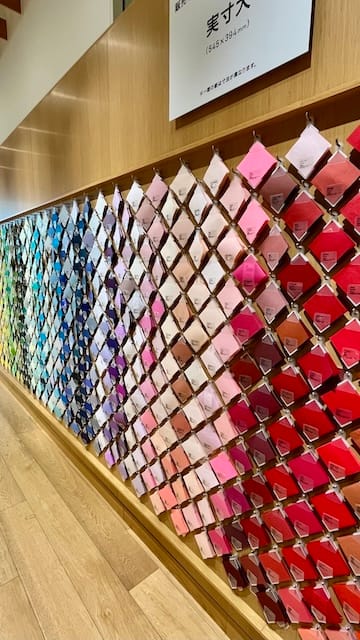
Shibuya / Aoyama / Omotesando / Harajuku
- Japanese designer flagships: Issey Miyake, Comme Des Garçons, Sacai, Undercover, Maison Kitsuné, Descente, Yohji Yamamoto, and Prada (not Japanese, but the building is stunning).
- Designer vintage: Amore, Casanova, Camellia, 2nd Street, Ragtag, Paradise, Vintage QOO
- Omotesando Hills: A unique shopping center designed by Japanese architect, Tadao Ando.
- Cosme: The Japanese Sephora.
- Don Quijote: Mega discount store for beauty, snacks, souvenirs, and random things you didn’t know existed. There’s several locations throughout the city and are open 24 hrs.
- Lemaire: This stunning flagship just opened last month in a converted private residence with a kitchen and a garden.
- Cat Street: Explore some of the vintage shops mentioned above, but the highlight is running into Tokyo’s fashion dog icon, Montjiro.
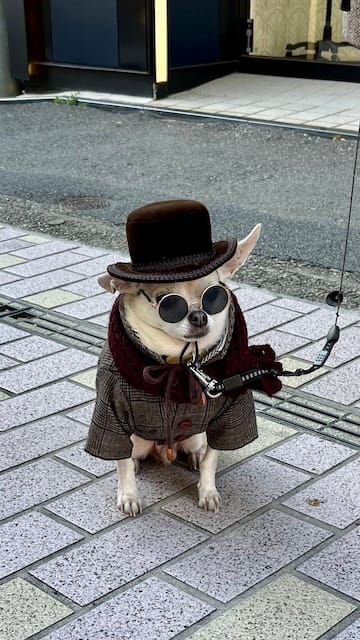
Shimokitazawa
- Sukonbu: Located on the bottom floor of the shopping complex, Mikan Shimokita, this cute shop features handmade crafts and jewelry from independent artists. Each maker rents a little cubby to sell their products so there’s always a rotation of new things to see. Cash only.
- APFR: Handmade candles and fragrances from the highest quality materials sourced in Japan. My favorites are Green Light, a fresh woody scent with fig leaf and blackcurrant. I also love this closet tag in New Day, a woody floral scent with green pepper and ginger.
- Other fun things to explore in this neighborhood.
See 🖼️
- DisneySea (Chiba): The only DisneySea in the world! I could do a dedicated newsletter on DisneySea, but just know it’s truly magical especially in December and a must for Disney fans. It does require a dedicated day, thoughtful planning, and patience as it’s always packed. This is an informative video that breaks down the details.
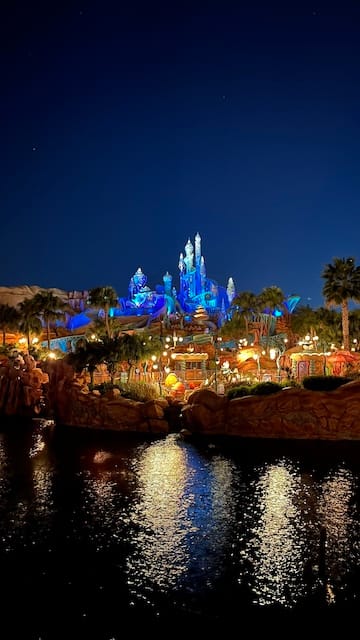
- teamLab Planets (Toyosu): Immersive art installations. There’s also a new teamLab Borderless that opened in Azabudai Hills.
- Meiji Shrine (Harajuku): Escape from the hustle of Harajuku and step into the peaceful forests of this shrine.
- Snoopy Museum (Machida): Recently renovated earlier this year. This is the satellite museum of Charles M. Schulz Museum in Santa Rosa. I loved the light show in one of the exhibit halls and the gift shop was so good. Don’t miss the adorable Peanuts Cafe that serves cake with Snoopy’s face.
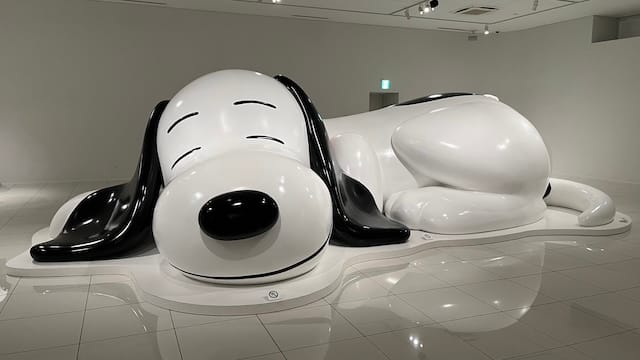
- Tokyo Skytree (Sumida): World’s tallest tower and tallest building in Japan.
- Shibuya Sky / Scramble (Shibuya): Recently opened observation deck overlooking the city. The building also has tons of shops and eateries to enjoy.
- Shibuya Crossing / Hachiko (Shibuya): The world’s busiest and probably most famous intersection, over 2.4 million people walk through Shibuya Crossing daily. Don’t forget to stop by and say hello to the goodest boy in history, Hachiko.
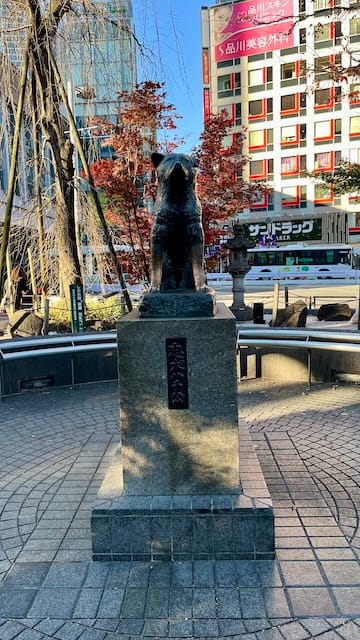
- Nezu Museum (Aoyama): Beautiful museum featuring Japanese pre-modern art. The garden alone is worth the visit.
- 21_21 Design Sight (Roppongi): Design museum created by Japanese architect Tadao Ando and fashion designer Issey Miyake.
- Shinjuku National Garden (Shinjuku): I discovered this park while waiting for ramen and was surprised at how vast it was. It features Japanese, English, and French gardens along with a greenhouse.
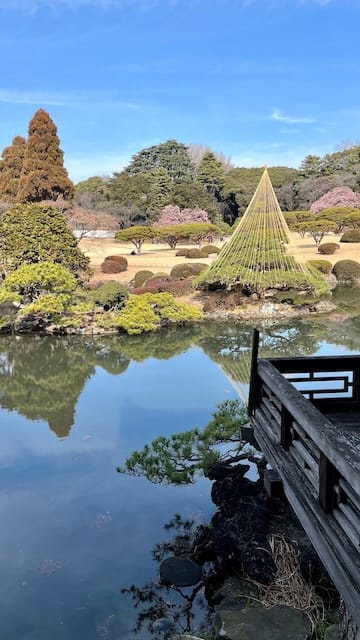
- Tsukiji Outer Market (Tsukiji): Outdoor fish and produce market with various stalls selling delicious foods, including fresh tamago, fishcakes, strawberry mochi, and of course the sushi of your dreams. Note: walking and eating isn’t encouraged so make sure to stand in designated eating spots before moving on. Bring cash.
- Yayoi Kusama Museum (Shinjuku): Kusama might just be the most recognizable figure in contemporary art, especially after last year’s collab with Louis Vuitton. This museum has the largest collection of Kusama’s work. She’s now 95-years old and lives in a mental institution, but is still going strong with worldwide installations and exhibits.
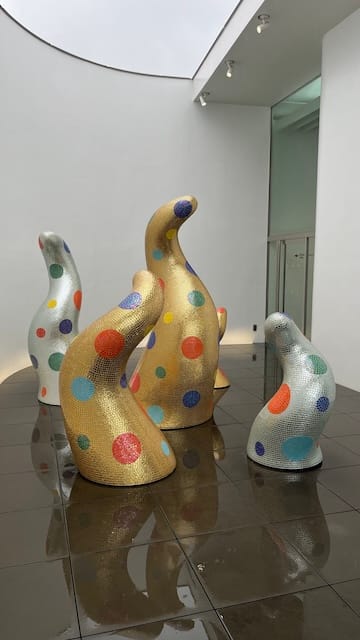
- Tokyo Dome (Bunkyo City): After months of trying to navigate the concert ticket process, we managed to get VIP tickets to the very last Perfume concert before they retired. The venue itself is outdated and rather drab inside, which is probably why people hang out at the nearby shopping center before entering. Some interesting differences I noticed between American and Japanese concerts:
- No one really ate or drank so there’s very few options inside the stadium. People mostly brought their own provisions.
- Very lax bag policy no doubt due to just how safe Japan is. Large backpacks and water bottles were totally fine.
- People mostly wore concert merch. No elaborate costumes or a cowboy hat in sight.
- No recording during the show. It was quite amazing to watch an entire concert without a million phones in my face.
- People didn’t sing along and only cheered after the songs ended or when prompted by the performers. This was fine for me as I didn’t know any of the words, but it would have been really hard if it was Beyoncé.
- No stampede post-concert. Everyone stayed in their seats and waited until the announcer called each section to exit. We were out and at the train station in less than10 minutes without fear of being trampled.
- National Art Center (Roppongi): Stunning art center with individual galleries that feature unique exhibitions as well as a circular restaurant in the atrium. It’s worth a visit just to admire the architecture and check out the gift shop on the lower level. We saw the glamorous Bvlgari Exhibit while we were there.

Act 🙏
The Japanese culture is what makes the country unlike any other in the world. It’s one that’s rooted in respect and places the collective ahead of the individual. It’s why people queue politely, the streets are clean, public places are quiet, and people can safely leave their belongings unattended at a restaurant. It’s also a culture that values rules and customs that may seem strange to foreigners and have definitely challenged my own Western sensibilities. But they’ve also made me a more open-minded traveler and an overall better person. Here are some common etiquette tips.
- Silence is golden: there’s no talking on public transit. People also keep their voices down in restaurants. Cars rarely honk and even construction sites have legal requirements to keep the noise down.
- Walk on the left side: pay attention to the designated walking lanes or risk a collision, especially in busy train stations. People also don’t jaywalk.
- Avoid eating or drinking while walking: there are designated eating spots at outdoor markets and outside convenience stores.
- Don’t litter: you shouldn’t do this anywhere, but there are far less trash cans in Japan. Just carry your trash until you get to a train station or your hotel.
- Queue for everything: getting on/off a train, getting on/off an escalator or elevator, walking up/down stairs, crossing a busy street, and this is all before getting to wherever you’re going where you will likely queue again.
- Use the tray at registers: when you pay at a restaurant or a store, place your money or credit card in the tray rather than handing it to the person. They will also place your change or card back in the tray.
- Dress appropriately: while you can technically wear what you want, just know Japanese people are generally always in business formal attire even during the hot summer months. Even children are dressed in the most polished school uniforms. It’s rare to find people in jeans and tees unless it’s a super cool streetwear look.
- Get to know the Japanese toilet: do some research on this prior so you’re not freaking out in a bathroom stall.
- When in doubt, just bow: it’s common for people to bow when you enter or leave an establishment. Some places take this to the next level and will continue to bow until you are no longer in sight. I find this really awkward so I usually just continually bow too until the door closes and then one more for good measure before quickly scurrying away.
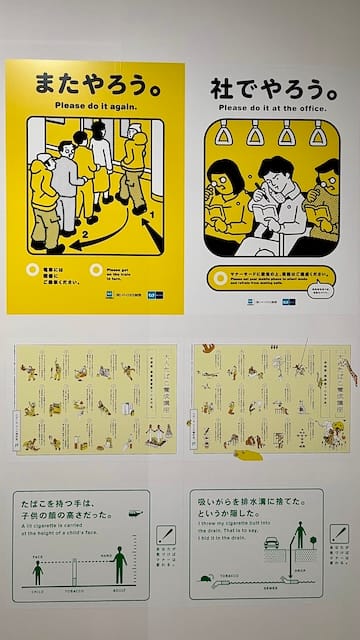
Crumbs (other notes) 📝
- ✈️ I highly recommend flying a Japanese airline like JAL or ANA. Even the regular economy experience feels premium. Service is top-notch and the bathrooms are always clean. Plus they offer hot soup with your meal, which feels really nice on a long-haul flight. Fly into Haneda if you can since it’s a 15-min train ride to the city center vs 90-min from Narita. Note: Japan’s airport shopping is elite so save time for that if you can.
- 🚄 Japan has one of the world’s most sophisticated train systems. It can be a learning curve to navigate all the various lines, but there are English signs everywhere and station attendants are helpful. Avoid commute hours (7-9am and 5-7pm) if you’re claustrophobic because trains get packed to the brim. Get a commuter card on your phone prior to arrival, which you can also use to pay at select merchants. If you want to take a taxi, call one using the Go app, which works similarly to Uber/Lyft.
- ☀️ Japan is super hot and humid during the summer so I like going in the fall or winter. Spring is also nice, but can be very busy during cherry blossom season.
- 💳 Credit cards are becoming more common in Japan, but would also recommend carrying some cash in case you need it. ATMs that accept foreign cards can be found in convenience stores like 7-11.
- 🏨 We typically stay near Josh’s office in Shinagawa at either The Strings or Prince Sakura Tower (not to be confused with the Prince Hotel or Prince Tower). I wouldn’t recommend the location to tourists since it’s more of a business district. If we were just traveling as tourists, my first choice would be the Park Hyatt (re-opening Oct 2025) or the Muji Hotel in the heart of Ginza. The rooms at Muji are small, but expertly designed and fitted with all Muji products and built from sustainable and recycled materials. Plus it offers the tastiest breakfast buffet and an afternoon snack lounge. We’ve also stayed at the Hotel New Otani which has spacious rooms and a lovely garden.
- 🦺 Japan is one of the safest countries in the world. I have no issues walking around and taking the train alone at night. I’m often wandering on my own since Josh is working all day, but Tokyo is designed for solo travelers and introverts so I feel right at home.
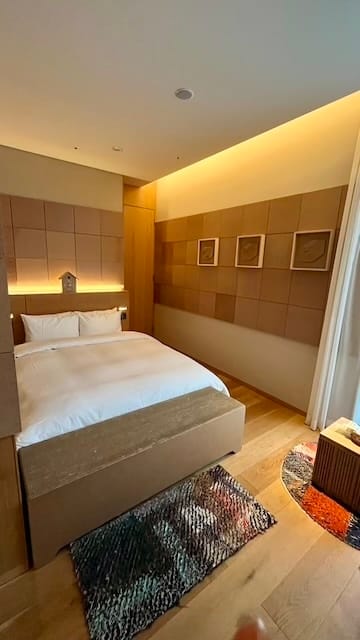
Member discussion